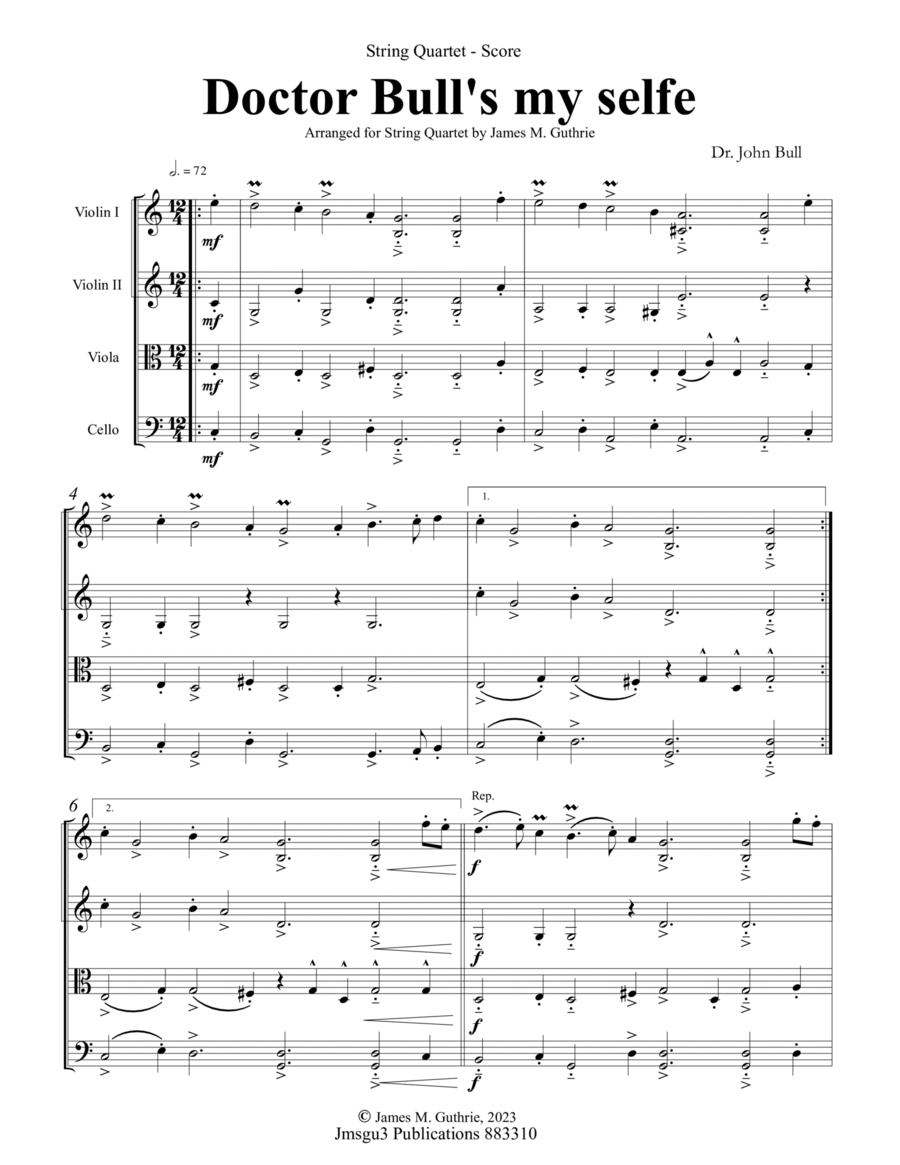String Quartet Cello,String Quartet,Viola,Violin - Level 2 - Digital Download SKU: A0.1292748 Composed by Dr. John Bull. Arranged by James M.. Guthrie. Chamber,Contest,Early Music,Festival,Historic,Renaissance. 7 pages. Jmsgu3 #883310. Published by jmsgu3 (A0.1292748). John Bull was an English composer, organist, virginalist, and organ builder who lived from 1562/63 to 1628. He was educated as a chorister of the Chapel Royal in London and later became a Doctor of Music at both Oxford and Cambridge Universities. Bull was one of the most famous composers of keyboard music of the early 17th century, and most of his compositions were written for the virginal, a keyboard instrument popular in the Renaissance period. He was known for his outstanding technical ability and keyboard virtuosity, and his music is distinguished by unfailing resourcefulness in devising new musical ideas. Bull's reputation rests on his extensive compositions for virginals and organ, some 150 extant pieces published in Musica Britannica. He was also one of the contributors to Parthenia, a collection of keyboard music published in 1611. Bull wrote an anthem, God the Father, God the Son, for the 1613 wedding of the princess and the Elector Palatine, in addition to his keyboard compositions, verse anthems, canons, and other works. Bull's music ranked among the foremost composers along with Byrd, Gibbons, and Tomkins.John Bull had several contemporaries who were also prominent composers during the Renaissance period. Some of these composers include:William Byrd: Byrd was an English composer and one of the most influential figures in English Renaissance music. He was a contemporary of John Bull and is considered one of the greatest composers of his time. Byrd's compositions include sacred choral music, keyboard works, and consort music.Orlando Gibbons: Gibbons was an English composer and organist who lived during the same period as John Bull. He was known for his sacred choral music, particularly his anthems and verse anthems. Their expressive harmonies and intricate counterpoint characterize Gibbons' compositions.Thomas Tomkins: Tomkins was another English composer who was active during the same time as John Bull. He was known for his sacred choral music, including anthems and services. Tomkins' compositions are notable for their rich harmonies and expressive melodies.Jan Pieterszoon Sweelinck: Sweelinck was a Dutch composer and organist highly regarded during the Renaissance period. He was known for his keyboard music, particularly his variations and fantasias. Sweelinck's compositions significantly influenced Bull and other composers of the time.These composers, along with John Bull, were influential figures in the development of Renaissance music and significantly contributed to the repertoire of keyboard and choral music during that era.
